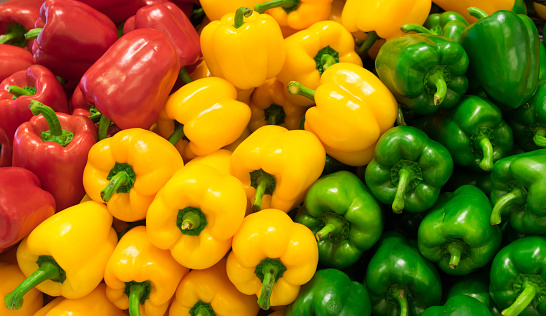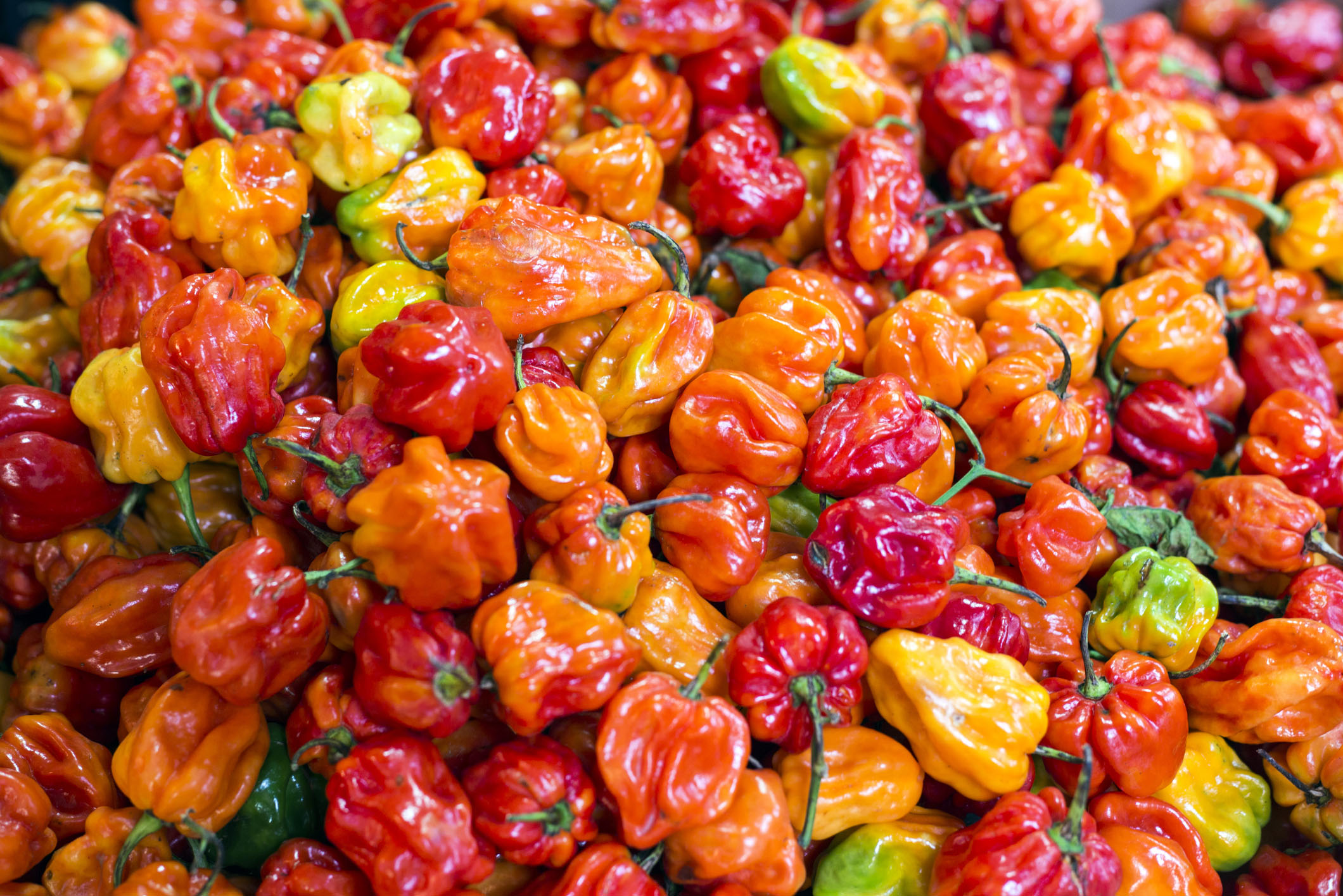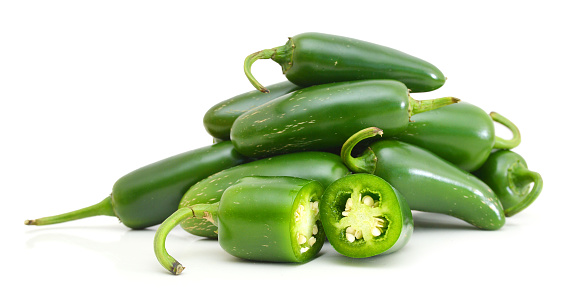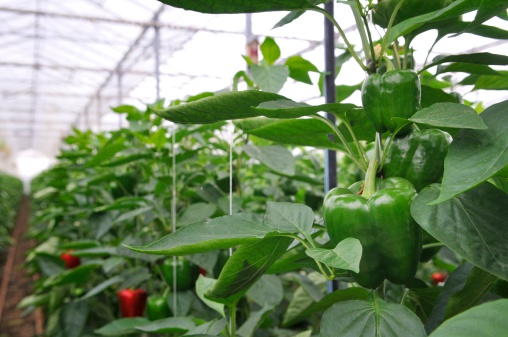
Produce 101: Peppers
Produce 101: Peppers — Let’s Start with Chile Peppers
For this episode of Produce 101: Peppers, we are going to discuss both chile and bell peppers.
Chile peppers have long been used as a flavoring agent in cuisines around the world. Food anthropologists believe that the cultivation of peppers began in Central Mexico around 6,000 years ago, making it one of the oldest domesticated crops still in production. Peppers were not only used for flavoring, they also have the ability to preserve foods. Peppers traveled the world along the established trade routes, spreading the crop far and wide.

What Makes a Pepper “Hot”?
Peppers contain a chemical known as capsaicin, which is where the species Capsicum derives its name. Capsaicin triggers a burning sensation in humans and some animal species, binding with temperature sensation receptors. The heat is in the membrane, not the seeds. The seeds do get hot too, but they are more “guilty by association” since they are next to the membrane. Take the membrane out, as well as the seeds, to reduce the heat levels of peppers.
What’s the Best Way to Deal with the Heat?
If it is on your hands or skin, fat seems to work best, olive oil and dairy in particular, but if neither are handy, go with dish soap. To help slow the burn in your mouth, consume some dairy. Dairy has a protein known as casein that strips the capsaicin from the receptors on your tongue—just remember the hotter the pepper, the more dairy you’ll need. Capsaicin is also used to make tear gas and analgesic creams, and these creams are used to reduce the pain of arthritis.
Are Dry Lines or Striations a Defect?
Dry lines or striations are not defects, they are naturally occurring and do not affect the quality. Cracks in the skin can indicate either:
- Heat level: hotter peppers can have dry lines or striations
- Weather during growing: dry lines or striations can form based on growing conditions

How Do You Measure Heat?
The Scoville Scale is the language we use to communicate the heat level of peppers. Created in 1912 by Wilbur Scoville, this started off as a subjective taste test with a 5 person panel. A solution of the pepper was made, and then a number of equal dilutions were made until there was no longer any perceptible heat. We now utilize high performance liquid chromatography in order to more accurately measure a pepper’s heat level. The scale starts at 0 with bell peppers and goes all the way up to the super-hot varieties that register in the 1,000,000+ range.

Produce 101: Bell Peppers
This is the most common of all fresh pepper varieties. They are sold in a myriad of colors, but all start off as a green pepper. The grade standards are U.S. Fancy, U.S. #1 and U.S. #2, with the standard relating to size, shape, and color uniformity. U.S. Fancy is the highest grade, and as such, commands the highest price.
Hot House Grown Peppers vs. Field Grown
If picture perfect is what you’re after, look at hot house grown peppers. These are typically very uniform in size, shape, and color, and often times, offer the best yield. Hot house peppers are grown in controlled situations (a greenhouse) and are generally more attractive and uniform. They are better suited for applications that require a more uniform end-result: uniform rings, uniform julienne, or whole applications where visual matters. Field grown peppers have a less-uniform shape (think: lumpy) and are less expensive and better suited for applications where appearance does not matter.
All Start Green
All fresh peppers start green and then color up as they ripen. You can allow a green pepper to ripen to red, but it is far more challenging than simply letting the fruit hang on the vine until fully mature.
Peppers can be a variety of colors when ripe, and can turn yellow, orange, white, or even shades of purple. They can also be a mix of colors, like in the case of the Suntan pepper, which is a mix of green and red peppers. Chile peppers can also be a mix of color.
Produce 101: Peppers and Storage
Fresh peppers need to be kept cool and dry, 45-50 degrees F is the optimum storage temperature range, but you absolutely can go a little colder, just don’t go below 34 degrees.
Dan talks about Produce 101: Peppers
Contact your Sales Consultant about adding peppers to your next order. If you are not a customer, find out how to become one today!
Content provided by Chef Daniel Snowden, the Director of Culinary Development for FreshPoint Central Florida. He has been in the produce industry almost 20 years, and loves getting geeky about food. Additional contributions by Lisa Brizard.
Some tools you can use:
Visit freshpoint.com for our seasonal availability guides—and while you are there, check out the FreshPress, our latest market report. Place your orders online with ease at myfreshpoint.com. Did you know you can receive real-time reliable delivery alerts on the day of your delivery? Activate and subscribe at FreshPoint.com/mydelivery
Download our app and take your produce management on the go. Place orders, review flyers, watch videos…all in one spot!
Find out more details about our UBU program, and how we are shining a spotlight on food waste while making value and food safety a priority.
We buy local to strengthen regional economies, support family farms, preserve the local landscape, and to provide fresh-from-the-farm food to our customers. Local.freshpoint.com connects you to your local farmers like never before! Customize your search by zip, city, state, radius…even by crops and growing methods. Pop in your zip code and learn about our local farmers.
Socialize with us!
Did you know we are on YouTube? Head over to our page and check out our 75+ videos. Don’t forget to subscribe, and also be a part of our Bell Team—hit the little bell icon to get notifications when we upload new videos.
Follow FreshPoint, Inc. on Facebook, Twitter, Instagram, and LinkedIn…and follow The Produce Hunter on Instagram as she finds the best specialty produce at the Santa Monica Farmers Market.

